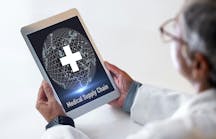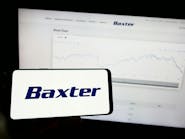Healthcare Purchasing News challenged supply chain experts and observers to gaze into their horizon-scanning crystal orbs and envision how distribution and logistics to remote care facilities – including mobile surgical suites and the patient’s home – might look, function and feel differently in terms of accuracy, effectiveness, efficiency and reliability by 2032. Here’s how they foresee a decade out.
“I believe healthcare providers are at crossroads. Their [supply chain management] processes have been built to be uber efficient at serving their acute, non-acute and ASC models. Now, they need to pivot their existing models (albeit with some tweaks) to serve the patient where they live. I think about the recent experience of my father who had a stroke in December 2021. He had tremendous home healthcare through clinician onsite visits and telemedicine appointments offered by a large IDN in Western Pennsylvania. At the end of each visit, the clinicians instructed my parents what supplies to order to monitor their health or to be successful with subscribed treatments. However, that is where the experience ended for the IDN. I see that needing to change.
“I imagine an extension of provider supply chains, where instead of my parents needing to search for the best blood pressure cuff on Amazon or Walmart websites (wondering about quality or country of origin), the clinician simply orders it for them, from a B2B site operated by the IDN with best pricing, determined compliance, and best quality. It’s a win for the provider (they keep the revenue and leverage existing supply contracts) and the patient (they don’t need to search for the right items and are ensured that items they get came through a clinical based value analysis process). The providers have the best processes for clinical efficacy, now they need to pivot their distribution, inventory and logistics models to serve the patient where they live. Because if they don’t, others are lining up to fill the void.”
Michael DeLuca, Executive Vice President, Operations, Prodigo Solutions
“We can also expect to see the introduction – and adoption – of more tools that will create a more consumer-like experience. Current inventory management systems don’t make correlations between supplies. To make hospital at home efficient from a supply chain management perspective, we need to use data to help us see the relationship between supplies and the episode of care. Once we can understand these relationships, we can better automate inventory ordering.
“For example, in the future, supply chain teams and clinicians could build a ‘shopping list’ of supplies that includes everything a patient would need in one box. With a click of a button, a supply chain professional can queue up the supplies needed for an episode of care.”
Chris Luoma, Senior Vice President, Global Product Management, GHX
Jake Crampton, CEO, MedSpeed
“We anticipate that distribution and logistics capabilities to remote care facilities will continue to grow. As their operations continue to evolve, it will be important to continue leveraging our manufacturing and distribution footprint to adapt to new spaces. More products and technology will continue to be introduced into these spaces, and ensuring the delivery of the supplies and resources needed are capabilities Medline already has in place and are prepared to invest in further.”
Zach Pocklington, Senior Vice President, Post-Acute Care division, Medline Industries
“Distribution disruptors will emerge (Amazon or others) that will be able to deliver directly to the home or remote office. The distributor will be able to distribute medical suppliers, office supplies, cleaning supplies and break room supplies. Potential use of ‘Premium Service’ with Lyft/Uber for product delivery to the patient home may be in our near future with more price transparency and ‘shopping’ options available for patients to choose the preferred company based on social media reviews of that provider, distributor or logistics company.
“I don’t see the traditional distributors giving up any sector. Henry Schein, McKesson, Medline all have a large market presence in the non-acute space. They all have the capability to receive orders on-line and can perform analytics on supply activity they provide. They will be very aggressive defending their market share from disruptors such as Amazon. The pandemic has shown there is an opportunity for new distribution solutions.”
“Large nationally based non-acute organizations (my example of Solis Mammography) rely on the nationally based distributors (McKesson, Henry Schein, Medline) that have multiple distribution centers (Amazon uses ‘fulfillment’ centers). These distributors use their own vehicles or use UPS, FedEx or other established carriers.
“Hospitals that are trying to distribute to hospital owned non-acute locations from a hospital-owned warehouse will have logistical challenges, especially for servicing non-acute locations that are more than a one-to-two-hour drive from the hospital-owned distribution center.”
Doug Heywood, Managing Partner, RDA
- Vertical integration and consolidation of services by payers and IDNs for care outside the hospital/facilities walls.
- Same-day and last mile service: A variety of mechanisms for the last mile, including fleets of vehicles for certain categories of goods and services. This could include mobile imaging/diagnostics, labs, bent metal DME (hospital beds), respiratory assistance (oxygen concentrators, CPAP machines) and couriers that serve in a role of rapid response and delivery of medical supplies, medications, oxygen refills.
- Technology enablement: Care and service coordination companies will have emerged to collaborate with payers, IDNs and hospitals to bring together healthcare providers and goods and services in the home and other decentralized care settings.
- National, regional distribution for next day delivery and local distribution centers/depots for same-day fulfillment and delivery.
- Medical Services Technicians’ (or similarly named) and credentialed healthcare enablers: There will be trained and certified individuals (not nurses, physicians, NPs, PAs, or home health aids) who bring goods into the home and set up equipment.
- Paramedics and Super Paramedics: State and national regulations will enable expanded use of paramedics as ‘tethered’ healthcare providers to physicians to enable in-home assessment and treatment.
- Remote patient monitoring (RPM): Device-enabled and deviceless RPM will be ubiquitous to enable prevention, early detection and rapid response for patients with chronic complex conditions and those patients with conditions placing them at risk for acute episodes. Asset management, as well as to-and-fro logistics, will be incorporated into national, regional and local networks of RPM equipment providers – including biomedical requirements for reuse of in-home technologies.
- Supply chain data transparency and near real-time service level expectation for manufacturers, providers and distributors.”










